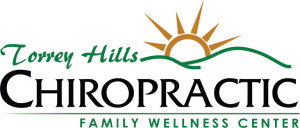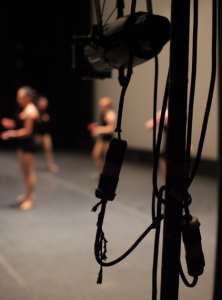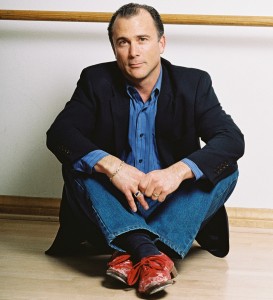An Inspiring Mix: Hip Hop & Contemporary Dance
Today, hip hop music and hip hop dance has become an integral part of today’s culture. Though it originated in the 1970’s, no longer is it the back alley dance style that ignited the freestyle battles or competitions of dancers breaking, popping and locking to the hip hop beat of rap music on the streets of New York, Chicago, Philadelphia and Los Angeles. Hip Hop has now gone mainstream.
The newest and fastest growing form of hip hop sought out by today’s dancer (including those in the Carmel Valley San Diego community), is a style referred to as ‘contemporary hip hop’ or ‘lyrical hip hop.’ This is known as the chorographical style where contemporary dance – which has its beginnings based in classical ballet and contemporary jazz – is combine with hip hop dance. This type of hip hop dance focuses less on the ‘competition’ or ‘battle’ aspect to hip hop, and instead focuses on the choreography of the combined dance styles.
Classical and hip hop dance have been combined as early as the 1970’s on a Saturday Night Live television performance where four hip hop break dancers were paired with four ballet dancers to perform the Four Little Swans variation from Swan Lake. Due to the fact that this was a televised performance, it allowed this new combination of dance styles greater exposure to a wide and varied audience than ever before. This resulted in more dance pairings that were produced by mainstream ballet and modern schools and companies. This style of pairing hip hop with ballet and modern dance, usually performed to down tempo rap and R & B music but was not yet a dance style that was ‘fused’ into one.
Although contemporary/lyrical hip hop has been gaining in preference among audience members and dancers alike, it’s nothing like the popularity this dance style now enjoys. As hip hop music and dance became more acceptable and integrated into the normal ebb and flow of dance studio classes, the rhythms of hip hop music and dance moves have been infused into the brains and bodies of dancers just as those movements of more classical ballet, jazz and tap. Merging hip hop with jazz, tap or ballet in choreography has been a natural step.
San Diego was first exposed to this ‘merged’ dance style when San Diego native, Cassandra Chavez, established her first dance company in 1994 called Unity Dance Ensemble. As a dancer trained in the classics, her versatility allowed her to pioneer the fusion of contemporary jazz and hip hop dance to be performed to a variety of music genres. This new style provided an emotional experience for the audience as well as that of the dancer. This new style of hip hop allowed the choreographer to tell a story with each contemporary jazz movement and with the subtle popping moves of hip hop.
Again, television was at the forefront with the reality television show “So You Think You Can Dance,” doing much to promote this new style of dance. Season four, seen in May through August 2008, had much to do with the public’s introduction and acceptance of the term ‘contemporary/lyrical hip hop.’ Choreographer and judge, Adam Shankman, coined the term when he described the choreography of Tabitha and Napoleon D’umo to Leona Lewis’ song “Bleeding Love”.
That exposure lead to dance studios and choreographers inundated with requests for classes in ‘contemporary/lyrical hip hop’ style and choreography. Dance competitions nationwide made provisions for the dance style to be entered as its own style category. Schools from elementary to the university level, all have integrated ‘contemporary/lyrical hip hop’ into their dance team repertoires. With this renewed interest in the pursuit of expression through dance, choreographers and dancers have the ability to use contemporary/lyrical hip hop to express and emote feelings to an audience at a core level that is unaffected and more accepting than ever before.
Many hip hop purists insist that ‘contemporary/lyrical hip hop’ is not true hip hop. That is a case, I suppose, that can be argued. However, with the merging of these two dance styles – the classical with the street – a greater number of young dancers are more eager than ever to learn about ballet, jazz, modern dance and traditional hip hop just to be they are on the cutting edge of this evolving dance style. This evolving dance form has sparked the interest of young dancers everywhere to explore all dance styles, and has even reigniting the flame within more experienced dancers. I believe that in itself, is worth the argument.
Louis McKay is President of North County DanceArts, Inc. located in Carmel Valley and currently trains 400 students from ages 3 to 93 years of age. Louis has performed and taught Master dance and musical theater classes in 42 of our 50 states and Europe and South Africa. In 1980, Louis McKay opened Louis McKay Dance Studio, later to become North County DanceArts, Inc., which is a teaching facility that is best known for its professional teaching staff and quality dance training. Dancers from beginning level to professional are taught technique, terminology, and discipline in a nurturing and fun environment. Louis currently lives in Carmel Valley San Diego with his wife Tanya and is the proud father of four grown children and two grandchildren. Louis and Tanya McKay also own DanceHearts, a 501 (c) (3) Public Charity called Bells of Freedom Program, serves military men, women and their families by providing emergency care and support, back to school backpack program, vehicle donations and the annual “The Big Thank You” Military Holiday Event.
2 Responses to An Inspiring Mix: Hip Hop & Contemporary Dance
You must be logged in to post a comment Login












Yes…this is the hottest trend in dance now. Thank you Louis for bringing this dance form to the forefront. Love the performance by the North County DanceArts’ dancers…Kelsey Richards, Tara Aftahi and McKenna Genyn? Awesome!
Great combination of Hip hop dance and Contemporary dance. Really inspiring mix, the show the perfectness in performers steps.